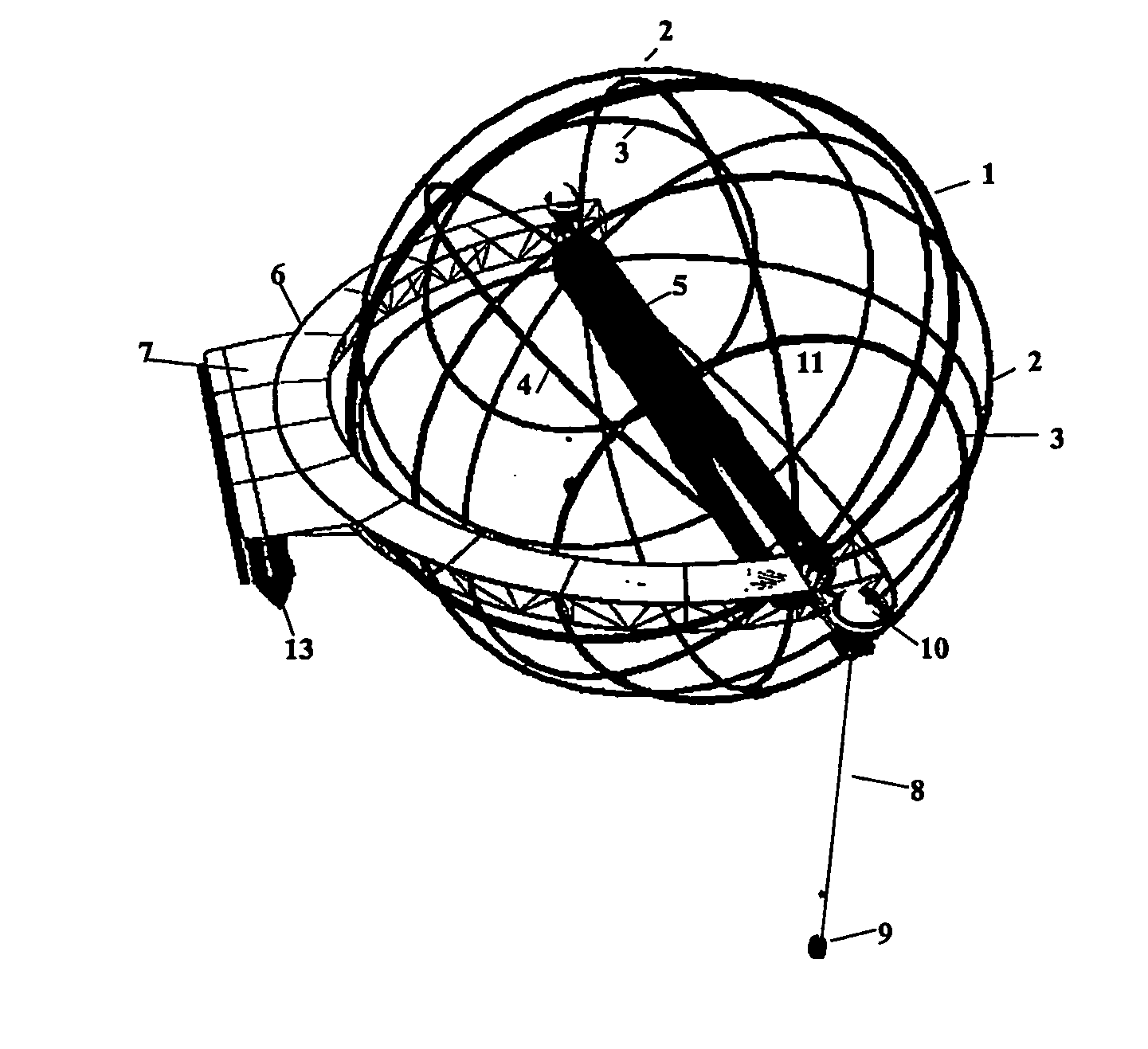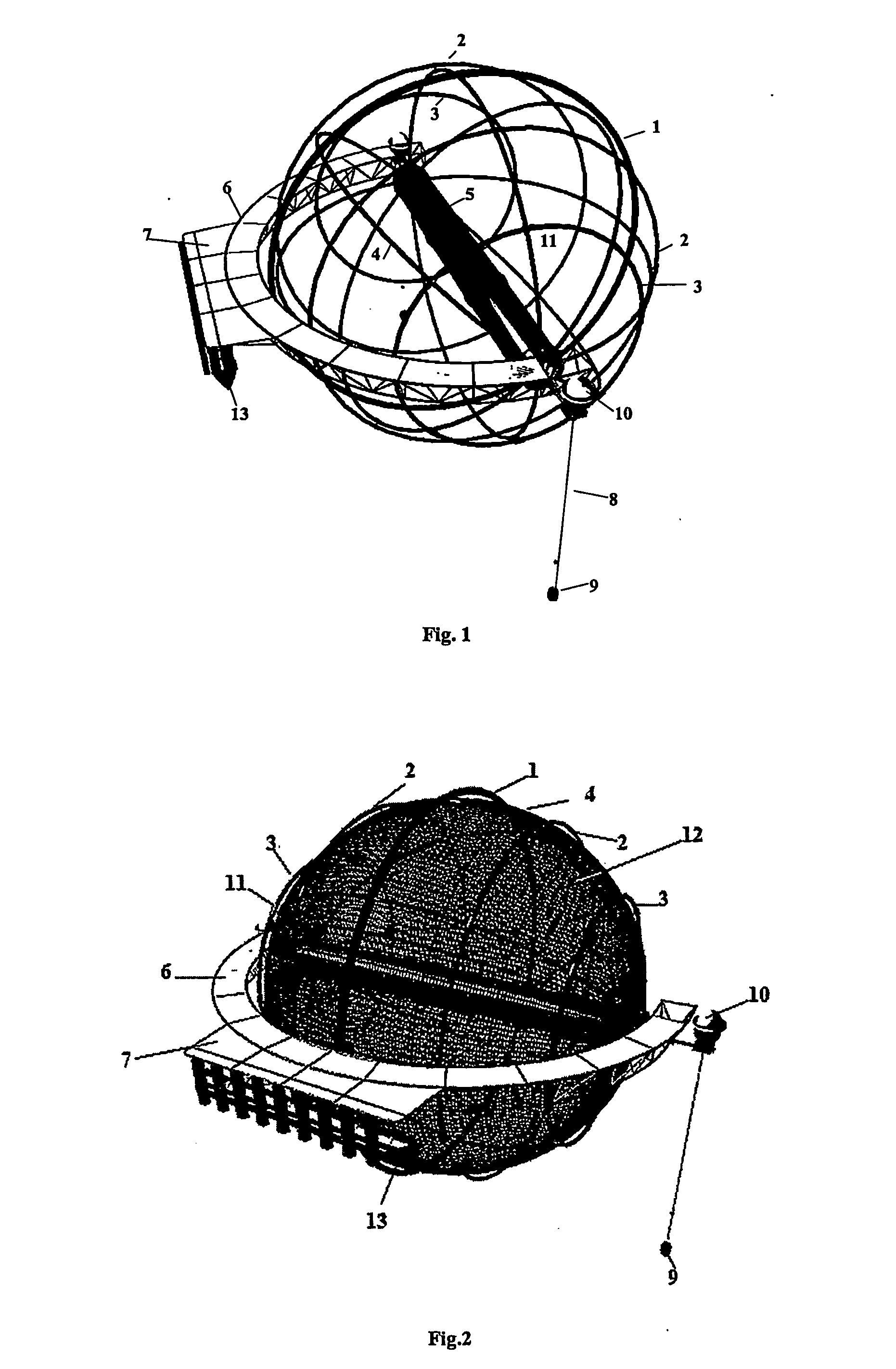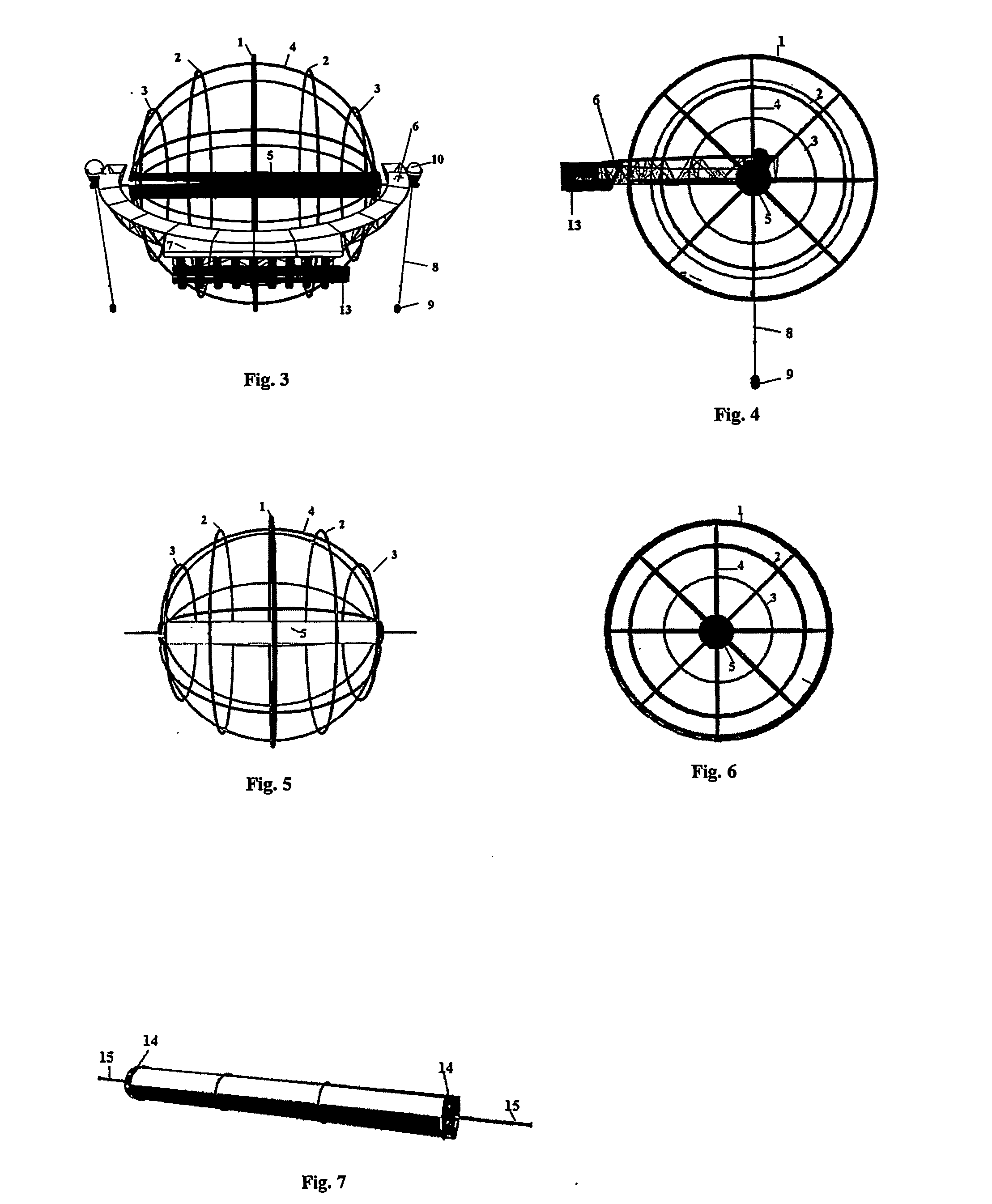Submersible netpen
a technology of netpen and submerged tank, which is applied in the field of netpen, can solve the problems of inability to develop large-scale marine breeding, inability to provide for efficient, safe and profitable fish farming, and limited production capacity,
- Summary
- Abstract
- Description
- Claims
- Application Information
AI Technical Summary
Problems solved by technology
Method used
Image
Examples
Embodiment Construction
[0045]FIGS. 1 and 2 show a possible embodiment of the invention. In the construction shown, the netpen framework is composed of tubular polyethylene stays 1, 2, 3, and 4, and a tubular steel center pole 5. The center pole may also be constructed of another rigid and strong material. The stays may be tubular, solid, or have another geometrical shape, such as quadrilateral. Polyethylene, as the material is referred to herein, is also intended to include other plastic materials bearing a close resemblance to polyethylene. Further included are polyethylene or polyethylene-like materials containing a certain amount of other constituent materials, such as fiber or fiber-like materials, e.g. carbon fiber.
[0046] The framework of FIGS. 1-6, when covered by the seine 12, forms a closed netpen, as shown in FIG. 2. The framework is built up of center stays 1, intermediate stays 2, polar stays 3 and tie bars 4. A possible design is shown in FIGS. 1-6, including one center stay, two intermediate...
PUM
 Login to View More
Login to View More Abstract
Description
Claims
Application Information
 Login to View More
Login to View More - R&D
- Intellectual Property
- Life Sciences
- Materials
- Tech Scout
- Unparalleled Data Quality
- Higher Quality Content
- 60% Fewer Hallucinations
Browse by: Latest US Patents, China's latest patents, Technical Efficacy Thesaurus, Application Domain, Technology Topic, Popular Technical Reports.
© 2025 PatSnap. All rights reserved.Legal|Privacy policy|Modern Slavery Act Transparency Statement|Sitemap|About US| Contact US: help@patsnap.com



